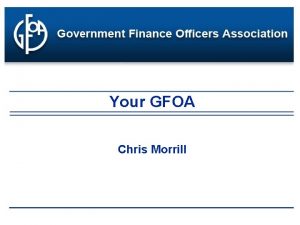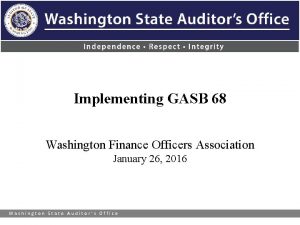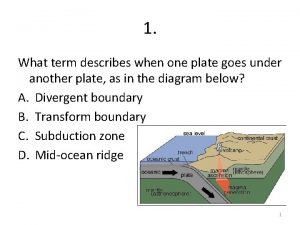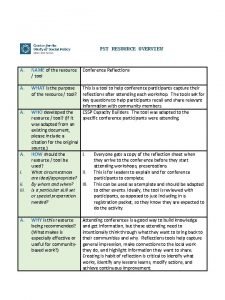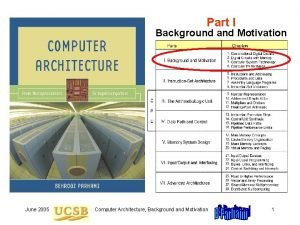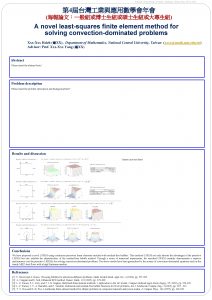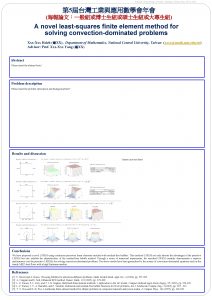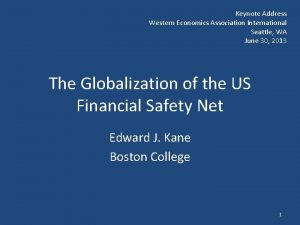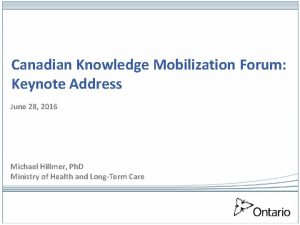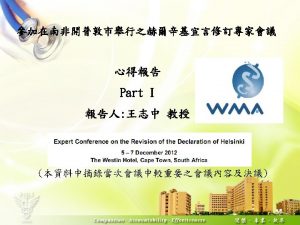Keynote Address Taiwan Finance Association Taichung Taiwan June


























- Slides: 26

Keynote Address Taiwan Finance Association Taichung, Taiwan June 9, 2007 The Dialectics of Basel II Edward J. Kane Boston College Edward J. Kane, Boston College 1

Purpose and Shortcomings of Basel I Purpose: To get regulators in all major countries of the world to define and enforce minimum capital standards for their banks that would align each bank’s Tier I and Tier 2 capital with the extent of its risk exposure. Ø Shortcomings: Banks and policymakers know that the measures of bank risk and bank capital, as well as the numerical standards that Basel I promulgates are conceptually flawed and easy for opportunistic bankers to arbitrage. Ø Edward J. Kane, Boston College 2

Basel I and II Illustrate the Workings of An Endless Regulatory Dialectic Changes in regulatory systems deliver benefits and burdens to regulated parties (“regulatees”). Ø To maximize the net benefits they receive from regulation, regulatees have an incentive to reduce the burdens by undertaking low-cost structural innovations (“Regulatory Arbitrage”). Ø After lags for recognition and response, regulation-induced and other innovations induce Re-Regulation. Ø Edward J. Kane, Boston College 3

Ø Each 3 -part dialectic combines alternating sequences of action and reaction: 1. Regulation-Avoidance Sequences 2. Avoidance-Reregulation Sequences Edward J. Kane, Boston College 4

BASEL II IS RE-REGULATION Edward J. Kane, Boston College 5

My Goals To Show That The Dialectics of Sequential Contracting Explains: 1. Why Basel II has so many loose ends (i. e. , “national options”). 2. Why the attempt to implement Basel II in the U. S. has been roiled by continuing doubts, controversy, and delays that have put the country further and further out of phase with planned implementation by Europe and Canada. 3. Why the debate among U. S. banks and U. S. regulators has proved fractious and intractable. a. Largest banks vs. other financial institutions. b. Federal Reserve vs. other financial regulators. Edward J. Kane, Boston College 6

REGULATORY DEBATE REFLECTS INDUSTRY DOUBTS ABOUT BASEL II Source: American Banker (11 -17 -06)/Insight Express Executive Forum 3 Q 2006 (Online survey of over 400 leaders of FSFs). Edward J. Kane, Boston College 7

A country’s financial safety net is a social contract whose counterparties are government entities and the major sectors of the national economy. Ø Government Subsectors Ø Financial Subsectors Ø Subsectors of the Real Economy Edward J. Kane, Boston College 8

CONTRACTING THEORY SEEKS TO IDENTIFY AND EXPLAIN DELAYS AND GAPS IN ANY DEAL CONTRACT: Any commitment by two or more parties to exchange a mix of reciprocal rights and obligations: a “deal” which creates an incremental balance sheet. COUNTERPARTIES: Serve as both principals and agents. STAKES: Value of contract performance or breach to stakeholders STAKEHOLDERS: Negotiators need to establish who the stakeholders are and what each seeks from the agreement. Edward J. Kane, Boston College 9

COORDINATING SAFETY NETS ACROSS COUNTRIES MEANS REWRITING INDIVIDUAL-COUNTRY SOCIAL CONTRACTS Counterparties are Major Sectors of an identifiable political or economic Community Three Contract Segments: 1. “Clauses” that define and assign responsibilities for preventing disruptive financial-institution insolvencies. 2. Clauses that define a range of tax-transfer techniques for financing this supervisory activity and losses it fails to prevent. 3. Clauses that dictate the political and economic incentives under which operators discharge their responsibilities. Incompleteness of Contract: 1. Goal Variables (Financial Stability and Cross-Country Integration) are not operationally “describable. ” 2. Operational Triggers and remedies for breaches are specified only in the U. S. 3. Optionality of Supervisory Actions: Operators of National Nets are authorized to make decisions about their actions improvisationally and under great time pressure. Edward J. Kane, Boston College 10

Model of U. S. Stakeholders and Clienteles I. Federal Reserve Board and NY Fed (lead negotiators for the U. S. ) a. Quantitative Staff at Fed (stake = advancement & “street creds”: e. g. , John Mingo) b. Successive Leaders of Basel II push William Mc. Donough and Larry Meyer (Greenspan in background) Roger Ferguson, Susan Bies, and Randy Kroszner ● Roger Cole at staff level c. Broad Stability Mission: Stabilize Liquidity; Oversee Domestic and International Value of the Dollar; Promote Systemic Stability d. Special Clientele: Larger Financial Holding Cos. and Their Quant. Staffs II. Other Federal Regulators: The “FDIC+” a. FDIC Mission: Resolve Insolvencies and Protect the Integrity of the DI fund. Special Clientele: Community Banks; Conference of State Bank Supervisors b. OCC Mission: Supervise National Banks and Strengthen Their Charter Special Clientele: Money-Center and Regional Banks c. OTS Mission: Support mortgage market (i. e. , keep Basel risk weight for mortgages low), Strengthen S&L charter, and supervise S&Ls Special Clientele: S&Ls & Building Industry III. Congress & Administration (Treasury) IV. Voter-Taxpayers Edward J. Kane, Boston College 11

Stakeholders in Europe Had Simpler Goals I. CHANGING MIX OF CENTRAL BANKS AND FINANCIAL SUPERVISORY AUTHORITIES a. Mission of Central Banks: Stability of Every Kind b. Mission of FSAs: Application of Basel Across Countries and Institution Types (Uniformity Rather Than Financial Stability) c. IOSCO et al. d. Clienteles: Systemically Important Institutions (Trend is for European central banks to transfer responsibility for fin. stability to FSAs. ) II. ECB and Other Authorities in European Union a. Mission: To promote pol. and econ. integration (uniform rules) b. Clientele: Sponsors of political and economic integration in Brussels and elsewhere. III. Elected Officials in National Governments IV. Voter-Taxpayers Edward J. Kane, Boston College 12

MY CONTRACTING MODEL Assumptions: First-Order Stake of U. S. Negotiators is Enhancing Financial-Stability; First-Order Stake of EU Negotiators is Enhancing Financial Integration. Ø Ø Objective Function for Regulators Mission Fulfillment Reputational Standing of their Organization a. b. c. d. Ø With clientele With National Politicians With Foreign Regulators With Taxpayer-Voters Personal and Career Rewards to Staff and Leaders Edward J. Kane, Boston College Objective Function for Regulated Institutions Ø Competitive Advantages, Including Loyalty of Clients and Broader Reputational Standing of Firm Ø Regulatory Forbearances Ø Personal Rewards to Staff & Leaders (Incentive Bonuses; Career Trophies and Opportunities) 13

Elements of a “Good Contract” 1. 2. Easy to Understand (Interpretation Costs and Adverse Options are Imbedded in “fine print”) Creates incentives for its fulfillment IMPLICATIONS OF BAD CONTRACTING: 1. Regulatory Dialectic tells us fine print will be exploited to the disadvantage of taxpayers. 2. When and as a bank weakens, Use of Total Assets in the Denominator of Insolvency-Avoidance Leverage Tests Outscores Basel II’s Complicated Risk-Weighting Procedures on Both Counts. 3. Technical staffs at Fed and large banks are not accountable for “overselling” higher-ups about reliability of models and of data on which estimation must rest. Edward J. Kane, Boston College 14

How Older Quants Mentor New Recruits Edward J. Kane, Boston College 15

Loose Ends and Fractiousness Occur in U. S. Because Dealmaking is Sequential: Three Phases “Predeal understandings”: Recognizing that “a stitch in time” might “save nine, ” prior consultation with constituencies develops a prior consensus that imposes a mix of hard and soft constraints on contract terms that U. S. officials could negotiate in Basel. 1. • • 2. 3. Understandings are less sharply worded, and less enforceable than a contract. Because understandings are largely private communications, particular constituencies can interpret their understandings in ways that might be inconsistent with understandings given to another sector. Dealmaking in Basel Postdeal Reconciliation of Individual-Country Regulatory Options allowed by Basel with Sectoral Understandings: Undertaken in public and backroom dialogues between industry segments and regulators. Edward J. Kane, Boston College 16

Inconsistencies in Prior Understandings and Goals US regulators eliminated the Foundational approach and specified that very large US banks would be required to use the AIRB approach. Ø Individual banks that designed and operated state-of-the-art risk-management systems would be rewarded with lower levels of capital (presumption that PCA “leverage ratios” could be over-ridden). Ø FDIC+ was assured that overall level of US bank capital would not be allowed to decrease much under Basel II, in line with their accountability for complying with FDICIA’s anti-forbearance PCA requirements. Ø Edward J. Kane, Boston College 17

How Does Recognizing These Phases Improve our Understanding of Basel II? When seen as part of a Regulatory Dialectic, this perspective helps us to see that the Value of Basel II Lies in the focus the Forum Creates for Better-Informed and More Timely Re. Regulation l Continuing negotiations demonstrate commitment to monitor changes in financial contracting technology and to respond to regulatory arbitrage in a relatively prompt and coordinated way. Ø Dialectical perspective also helps to explain Complexity and Incompleteness of the Evolving Deal l Why have negotiations been so protracted? Because so many counterparties are involved and the number in Europe kept expanding. l Why is deal so full of loose ends? Because hard-tounderstand options must be conveyed to national regulators and banks to enable them to rework predeal understandings with major sectors so as to sell the deal to competing constituencies in their home countries. 18 Ø Edward J. Kane, Boston College

QIS 4 (AND QIS 5) NEARLY DERAILED THE PROCESS IN 2006 Source: FDIC Edward J. Kane, Boston College 19

Quantitative Impact Studies QIS 4 surveyed 26 US bank holding companies expected to use the AIRB methods. Showed great variation in effects. If these BHCs met only their Basel II capital requirements, 17 of them would be classified as undercapitalized by PCA standards (a few others may have lied). Ø Surprising in that it seems as if bank quant staff filled out the survey to demonstrate benefits to their superiors (i. e. , to generate evidence that “risk” could be removed from the system), without recognizing the contradictory organizational need to quiet the fears of the FDIC+. Ø Supports hypothesis that quants at large banks and the Fed are the engine driving the Basel II 20 Edward J. train. Kane, Boston College Ø

Where is the U. S. Today? Ø Ø QIS 4 showed that large-bank and FDIC+ predeal understandings about individual-bank and system capital were inconsistent and that their subdeals had to be renegotiated. FDIC+ has firmed up their understandings about the leverage ratio and capital reductions for FDIC+ clienteles (Basel IA), with consequence that giant banks are now asking that their deal be revisited. Large banks want more options to use either a moreflexible AIRB or a standardized approach that is specifically tailored to the activities of large complex banking organizations. Fed personnel evidence impatience. Staff is embarrassed about continuing to fall further and further behind Europe and Canada. Edward J. Kane, Boston College 21

Stages in Finalizing Basel II in U. S. : Four Layers of Dealmaking Have to be Completed Before Implementation International Layer of Dealmaking: Between U. S. delegates and other members of the Basel Committee on Banking Supervision (Done) Interregulator Layer of Dealmaking: Between Fed and Leaders of “FDIC-Plus” 1. 2. a. b. Pre. Basel Understandings Post. Basel Process of Reconciling Contradictory Understandings (Nearly Done) Industry-Regulator Layer of Dealmaking: Between Regulators and their Clienteles, Pre. Basel and Post. Basel (Hang-Up Today) 4. Political Layer of Dealmaking: Regulators have to Sell Deals that clear first three levels to Politicians and Taxpayer/Voters (Eager to Take Any Deal) (similar layers exist in the EU) 3. Edward J. Kane, Boston College 22

Post-Basel Negotiations are realigning the original goals: focusing on equalizing competitive effects of potential reductions of minimum capital across U. S. regulatory clienteles rather than on rewarding improvements in risk management made by individual institutions. Ø Political pressures are likely to push minima generated by final version of Basel IA for community banks and still-to-be-determined large-bank options to be calibrated close to the U. S. regulators’ stated 10 percent threshold for redesigning the IRB option. Ø Edward J. Kane, Boston College 23

Value of Taking One’s Time to Get a Deal Right: Well Begun is Half Done Post-Basel Contracting Forum Large Banks Edward J. Kane, Boston College 24

What Next? : Confronting Cross-Country Loose Ends in Basel II Dealmaking Will Generate Many Higher-Numbered Versions of Basel Few Cross-Country Commitments made by Regulatory Bodies are Explicit; Most Are Implicit Ø Selective Implementation Will Occur: Looseness in Methods by which performance of regulators’ supervisory and disclosure obligations are to be triggered, monitored, and enforced Ø Weaknesses in defining or observing triggers or enforcing obligations convey adverse implicit options to one’s counterparties. [D. Carrullo of Georgetown Law claims that Basel II offers 82 opportunities for exercising “national discretion. ”] Ø At bank level, risk management depends on melding clearing and settlement networks with portfolio-offset valuation models that cannot easily be standardized. Ø Edward J. Kane, Boston College 25

APPENDIX: REALISTICALLY, TBTFU TELLS GIANT BANKS THAT THEY NEED LESS ENTERPRISE-CONTRIBUTED CAPITAL THAN SMALLER BANKS Source: American Banker (3/7/07) Edward J. Kane, Boston College 26
 Disadvantage of ms powerpoint
Disadvantage of ms powerpoint U god keynote speaker zip
U god keynote speaker zip Keynote assessment
Keynote assessment Revised profiles of the gifted and talented
Revised profiles of the gifted and talented Keynote 524
Keynote 524 Keynote059
Keynote059 Keynote-010
Keynote-010 Keynote-010
Keynote-010 Mom loves taiwan association
Mom loves taiwan association Physical memory vs logical memory
Physical memory vs logical memory Georgia government finance officers association
Georgia government finance officers association Gasb
Gasb Checkpoint
Checkpoint June holley
June holley Lottery in june corn heavy soon meaning
Lottery in june corn heavy soon meaning June safety tips
June safety tips June 6, 1944
June 6, 1944 Simplissimus 3 june 1919
Simplissimus 3 june 1919 Junes portfolio includes 177 shares
Junes portfolio includes 177 shares June cheetah wegener
June cheetah wegener 1 june children's day
1 june children's day Life orientation grade 7 june exam
Life orientation grade 7 june exam June 23
June 23 June 2005 calendar
June 2005 calendar Vfpms
Vfpms Proper noun of uncle
Proper noun of uncle June 2010 physics regents answers
June 2010 physics regents answers










